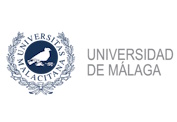OPE1 – Measurements and management of 5G/6G networks
Wednesday, 4 June 2025, 11:00-12:30, room 1.C
Session Chair: Jaap van de Beek (Luleå University of Technology, SE)
Reproducible Key Performance Indicator (KPI) Measurement Experiments in 6G Networks Under Mobility Conditions
Javier Otero-Mosquera and Alicia Meleiro-Estévez (University of Vigo, Spain); Pablo Fondo-Ferreiro (Universidade de Vigo, Spain); Francisco Luque Schempp (University of Malaga, Spain); Felipe Gil-Castiñeira (University of Vigo, Spain); Pedro Merino (University of Malaga, Spain)
6G networks are expected to support a wide variety of use cases from different vertical sectors with stringent requirements in terms of different key performance indicators (KPIs). As new experimental testbeds are being deployed to demonstrate and evaluate new technologies, it is important to perform systematic and reproducible experiments for measuring the relevant KPIs. However, there is a lack of tools for automated KPI measurement in mobility scenarios, which is specially relevant to analyze dynamic behaviors, such as handover events. In this paper, we address this gap with the proposal and implementation of a new tool to automate KPI measurement experiments from the terminal-side under programmable mobility scenarios. Our experimental results, validated on the 6G-SANDBOX’s Málaga platform, demonstrate the potential of our solution for achieving reproducibility in KPI measurement experiments under mobility conditions.
Towards Energy-Aware Video Streaming in 5G/B5G – Application Perspective
Mikko Uitto (VTT Technical Research Centre of Finland Ltd, Finland); Olli Apilo, Jere Koivisto and Nishu Gupta (VTT, Finland)
This paper presents an evaluation study how the characteristics and amount of video traffic affect to energy consumption in different video applications utilising GPU and CPU processing and in selected components of the mobile 5G network. The focus is put on the widely used HTTP adaptive streaming, which allows a flexible way for delivering dynamic content over the Internet for variety of mobile devices with unique characteristics. However, these devices tend to maximise the processing performance with the highest available video quality, which leads to the penalty of higher energy consumption. In this paper, we show how different video quality affects to energy consumption in different parts of the components over 5G RAN, and evaluate selected video applications on energy usage basis. For this purpose, we use an accurate and system wide mobile test network for the evaluation with advanced energy measurement infrastructure. The extensive set of results with different video player applications verify that the use of smaller bitrates with decent QoS and QoE levels can reduce end-to-end energy consumption towards green networking.
Experimental Integration of Non-5G Capable Devices into 5G Networks via Untrusted WLAN: the UNIF Approach
Apostolis K. Salkintzis (Lenovo, Greece)
This paper introduces the Untrusted Non-3GPP Interworking Function (UNIF), a novel network function designed to enable devices that do not support the 5G NAS protocol over untrusted non-3GPP access networks, referred to as Non-5G Capable over Non-3GPP (N5CN3) devices, to seamlessly connect to a 5G core network. UNIF bridges a significant gap in current 3GPP specifications by allowing such devices to utilize untrusted non-3GPP access networks, such as public WLANs, for 5G connectivity. The prototype implementation of UNIF supports single or dual PDU Sessions per N5CN3 device and dynamic traffic routing for edge and remote data networks. Evaluation results demonstrate UNIF’s key performance metrics and highlight its potential to extend 5G services to a broader range of devices and scenarios.
Performance Assessment of 5G Non-Public Networks for Industrial Applications in Factory and Offshore Settings for Digital Twin Creation
Dries Naudts (Ghent University & Imec, Belgium); Vasilis Maglogiannis (Ghent University – imec & IDLab Research Group, Belgium); Andreas Gavrielides (University of Antwerp, Belgium & IMEC, Belgium); Gilson Miranda, Jr (Telenet, Belgium); Jianqiao Cheng and Carlos Tiana Gomez (Flanders Make, Belgium); Johann Marquez-Barja (University of Antwerpen & IMEC, Belgium); Ingrid Moerman (Ghent University – IMEC, Belgium)
This paper presents a comprehensive assessment of 5G SA networks deployed in a factory setting and an offshore wind farm at the North Sea. The study focuses on critical use cases such as teleoperated Automatic Guided Vehicles (AGVs) in factories and teleoperated Unmanned Surface Vessels (USVs) in offshore settings. Key performance indicators (KPIs) such as network latency, data rates, and signal quality were measured using advanced network evaluation tools. The results demonstrate that 5G SA networks can meet the stringent requirements of industrial applications. The paper also discusses the challenges of deploying 5G networks in metal-dense factories and dynamic offshore environments, highlighting the importance of practical evaluations in these settings. Furthermore, the study introduces a machine learning-driven framework for signal and Quality of Service (QoS) prediction, leveraging diverse datasets collected in the factory environment. This framework aims to optimize network performance and lays the groundwork for creating a digital twin for factory communication systems.
Developing Adaptive Calibration and Benchmarking Methods for 6G Performance Measurement – Implementation and Conclusions from 6G-SANDBOX
Filip Ivanovic (Keysight Technologies, Denmark); Michael Dieudonné (Keysight Technologies, Belgium); Foteini Setaki (Hellenic Telecommunications Organization, Greece); Harilaos Koumaras (NCSR Demokritos, Greece); Bjoern Riemer (Fraunhofer, Germany); Antti Pauanne (University of Oulu, Finland); Pablo Herrera Diaz (University of Malaga, Spain); Abhishek Bakshi (Keysight Technologies, India)
The flexibility inherent to the 6G space through its use of virtualized/Service Based Architecture (SBA) networks means that generated performance results can be more difficult to contextualize than previous generations. In this space, experimentation, either with the purpose of evaluating the appropriate integration of a new network device, system or software or targeting the assurance of application-demanding performance service levels, needs to be done in such a way to ensure that the assessment is performed uninfluenced by the actual dimensioning constraints of the underlying beyond 5G (B5G)/6G experimentation platform. This paper explores the development of an Adaptive Calibration methodology, which can be used to provide context to results in the 6G space so that to ensure platform agnosticism. Exemplary results of its application in the 6G-SANDBOX project, exploiting four (4) different and geographically dispersed experimentation platforms, are presented hereby. The methodology involves the establishment of a baseline environment which can be measured before the introduction of a device/system/software under test (SUT). The results of the baseline measurement can be compared to the results including the SUT to produce deltas in multiple KPIs. These deltas can then be used to provide context to results generated within a single platform or be used to compare multiple platforms. The use of this methodology within 6G-SANDBOX uncovered significant performance disparities between the partaking platforms related to virtualization methods, and it is currently being used to drive the platforms closer to parity, investigate the virtualization issues and quantify the performance of various components within each individual platform. In this regard, the application of the proposed methodology is proven substantial to increase confidence in the SUT assessment results performed over B5G/6G experimentation platforms.








